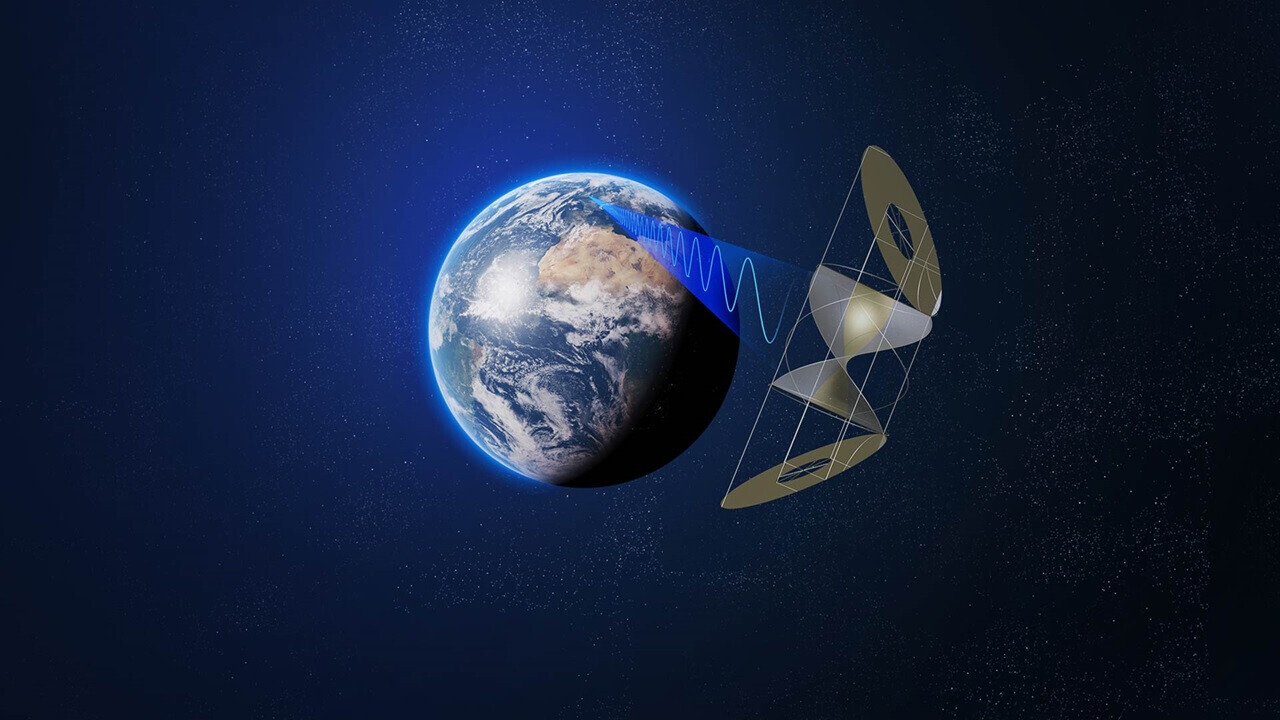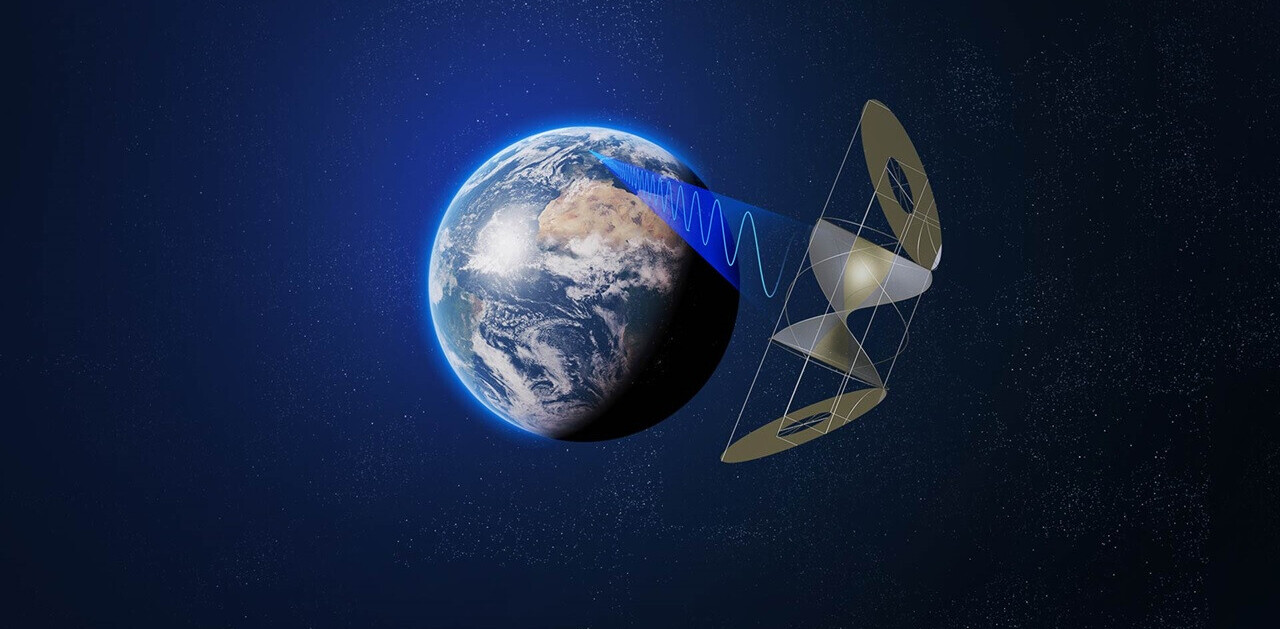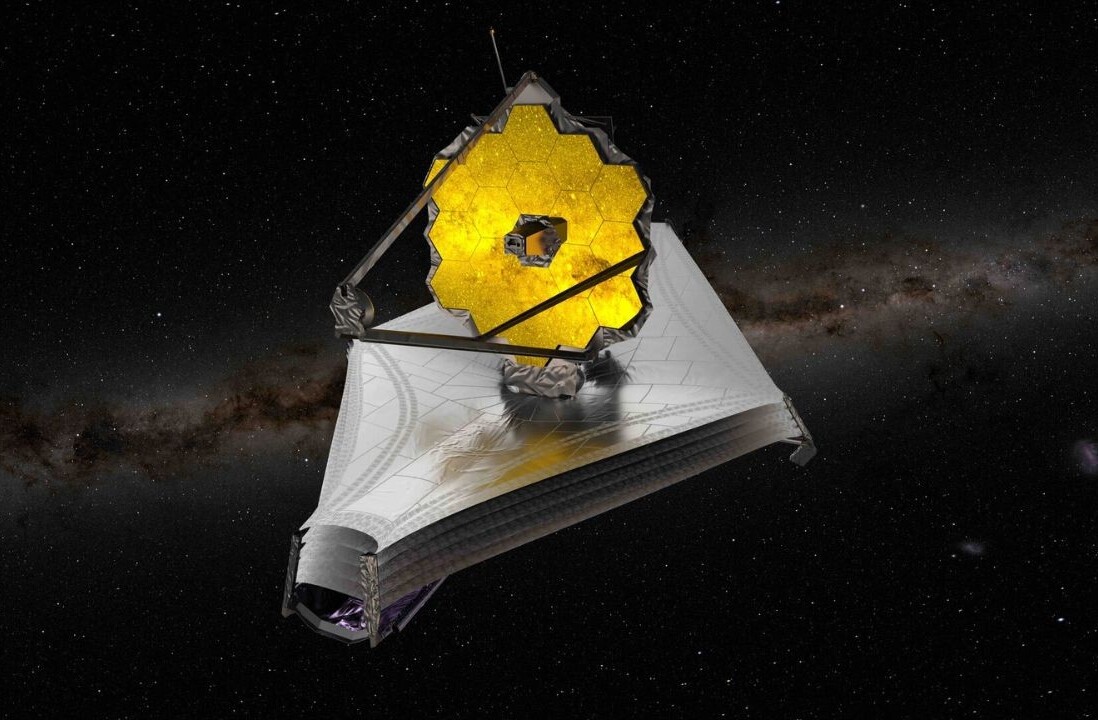
A UK startup has claimed a major breakthrough in its plans to beam solar energy from space to Earth.
At a lab in Belfast, Oxford-based Space Solar managed to light up an LED sign by wirelessly beaming energy through the air, from all angles. This marks the world’s first 360-degree wireless power transmission, said the startup.
“This steerable power beaming capability is the heart of our solar power satellite design,” Martin Soltau, founder at Space Solar, told TNW.
Space-based solar power involves capturing the Sun’s energy in space, using satellites equipped with solar panels. The power is then transmitted wirelessly in the form of microwaves to dedicated receiver stations on Earth, which convert the energy back into electricity.
Space Solar is designing a huge satellite system consisting of mirrors and solar panels. The solar farm will be located in geostationary orbit, some 35,000 km above the equator. Here it will follow the Earth’s rotation, constantly facing the Sun in order to collect as much energy as possible.
The ability to transmit energy to Earth from all angles is key for space-based solar satellites to work. This is because they need to be capable of beaming energy to a fixed point on Earth while orbiting around it.

“This demonstration has validated our computer modelling which allows us to scale up the system with confidence, from half a metre to many hundreds of metres in diameter,” said Soltau.
Solar power plants in space
Solar panels in space are capable of gathering far more energy than on Earth because, unhindered by the atmosphere, the intensity of sunlight is much greater. Space-based solar farms could also beam energy from space 24/7, regardless of the weather on the ground.
Space Solar wants to install the first commercial solar farm in space within the next decade. The plant would be capable of delivering 180 megawatts to the grid — enough to power a large town.
However, the startup plans to launch its first prototype satellite in just three years time, followed by a larger version by the end of the 2020s. This demonstrator will be able to power a village of around 1000 homes, said Soltau.
According to the European Space Agency (ESA), space-based solar power requires no new scientific or technological breakthroughs to work. Satellites transmitting TV signals from orbit are essentially beaming power to Earth — except at a far smaller scale.
“It can be done with today’s technology and unlike nuclear fusion, we don’t need any breakthroughs in materials science or understanding of new physics,” said Soltau.
In June last year, a group of US scientists managed to — for the first time ever — beam enough energy from space to be detectable by a receiver on Earth.
However, in order to capture enough energy to make them worthwhile, solar farms will have to be a kilometre or more across. The receiver station on the ground would need to cover an area ten times larger.
Space Solar believes the best location for these receivers would be offshore, perhaps in the vicinity of wind farms where there are existing grid connections. As for setting up the farm in space, an estimated 68 rocket launches would be required to carry all the components of the startup’s power plant into orbit.
However, with the falling costs of launches thanks to companies like Elon Musk’s SpaceX, “we’re able to do things in space that just weren’t feasible even a decade ago,” Soltau told Sky News.
ESA, NASA, as well as several companies in the UK, US, China and Japan are all working to make space-based solar a reality. The Department of Energy Security and the UK Space Agency has provided grant funding for the development of Space Solar’s first satellite.
Once established, solar-beaming satellites of the scale planned across the world could generate around 2GW of round-the-clock electricity, enough to power more than one million homes. It would take more than six million solar panels on Earth’s surface to generate the same amount, according to ESA.
Get the TNW newsletter
Get the most important tech news in your inbox each week.




